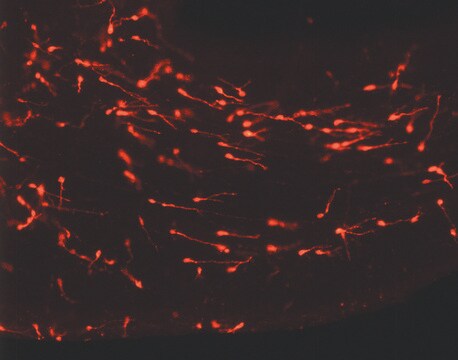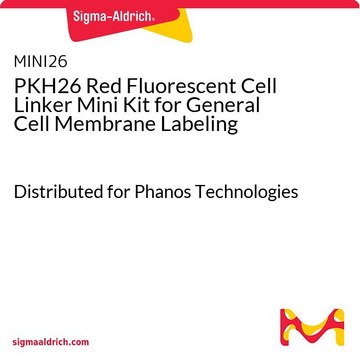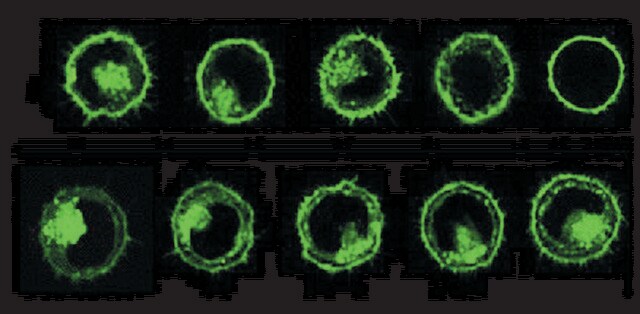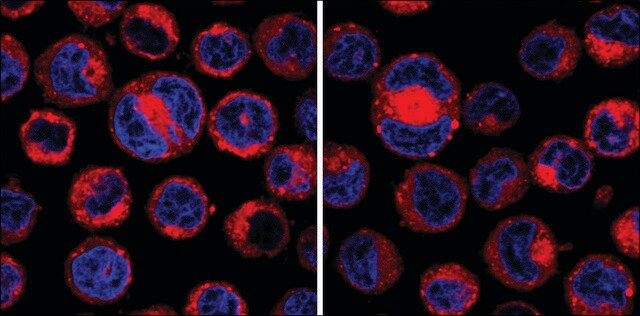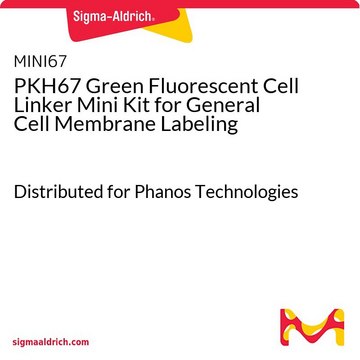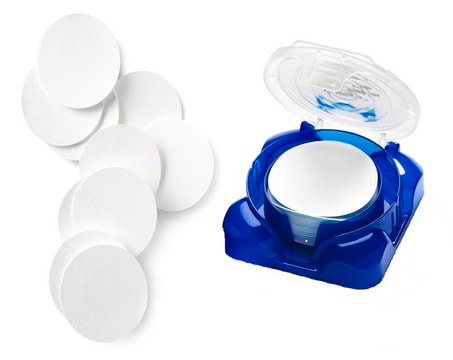추천 제품
애플리케이션
원리
Labeling of phagocytic cells by this methodology may be conducted either in vitro or in vivo. Intraperitoneal or intravenous injections of the PKH26 labeling solution will successfully label phagocytic cells in vivo, while cells of interest which have been isolated may be stained using in vitro labeling methods.
결합
법적 정보
키트 구성품 전용
- Diluent B 6 x 10
- PKH26 cell linker in ethanol .5 mL
신호어
Danger
유해 및 위험 성명서
Hazard Classifications
Eye Irrit. 2 - Flam. Liq. 2
Storage Class Code
3 - Flammable liquids
Flash Point (°F)
57.2 °F - closed cup
Flash Point (°C)
14.0 °C - closed cup
이미 열람한 고객
문서
PKH dyes are easy to use and achieve stable, uniform, and reproducible fluorescent labeling of live cells. PKH dyes are non-toxic membrane stains which produce high signal to noise ratio.
Lipophilic cell tracking dyes enable cancer biologists to track tumor and immune cell functions both in vitro and in vivo. Read the article to choose a right membrane dye kit for cell tracking and proliferation monitoring.
Optimal staining is a key component for studying tumorigenesis and progression. Learn useful tips and techniques for dye applications, including examples from recent studies.
A video about how you can use fluorescent cell tracking dyes in combination with flow and image cytometry to study interactions and fates of different cell types in vitro and in vivo.
Global Trade Item Number
| SKU | GTIN |
|---|---|
| PKH26PCL-1KT | 4061836680930 |
자사의 과학자팀은 생명 과학, 재료 과학, 화학 합성, 크로마토그래피, 분석 및 기타 많은 영역을 포함한 모든 과학 분야에 경험이 있습니다..
고객지원팀으로 연락바랍니다.